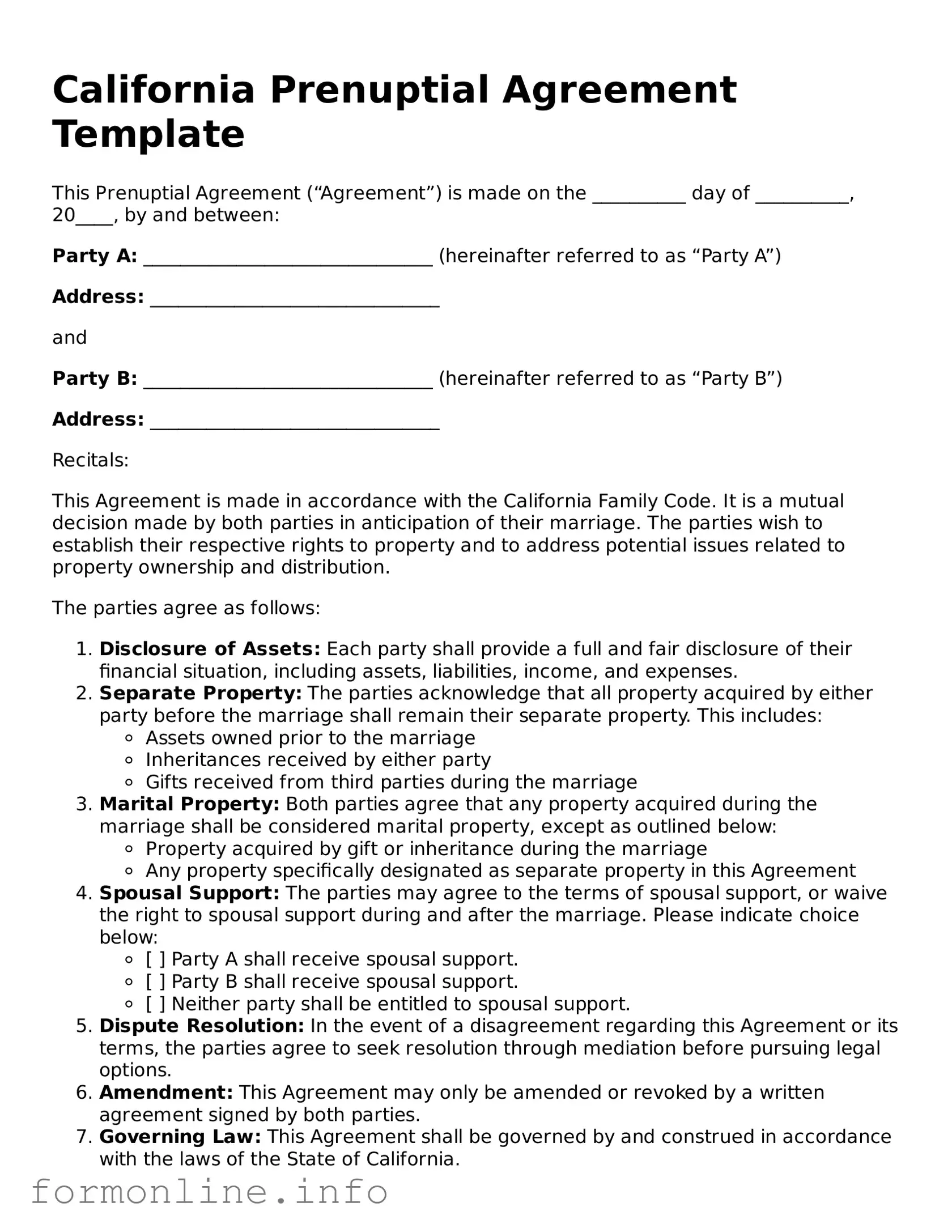California Prenuptial Agreement Template
This Prenuptial Agreement (“Agreement”) is made on the __________ day of __________, 20____, by and between:
Party A: _______________________________ (hereinafter referred to as “Party A”)
Address: _______________________________
and
Party B: _______________________________ (hereinafter referred to as “Party B”)
Address: _______________________________
Recitals:
This Agreement is made in accordance with the California Family Code. It is a mutual decision made by both parties in anticipation of their marriage. The parties wish to establish their respective rights to property and to address potential issues related to property ownership and distribution.
The parties agree as follows:
- Disclosure of Assets: Each party shall provide a full and fair disclosure of their financial situation, including assets, liabilities, income, and expenses.
- Separate Property: The parties acknowledge that all property acquired by either party before the marriage shall remain their separate property. This includes:
- Assets owned prior to the marriage
- Inheritances received by either party
- Gifts received from third parties during the marriage
- Marital Property: Both parties agree that any property acquired during the marriage shall be considered marital property, except as outlined below:
- Property acquired by gift or inheritance during the marriage
- Any property specifically designated as separate property in this Agreement
- Spousal Support: The parties may agree to the terms of spousal support, or waive the right to spousal support during and after the marriage. Please indicate choice below:
- [ ] Party A shall receive spousal support.
- [ ] Party B shall receive spousal support.
- [ ] Neither party shall be entitled to spousal support.
- Dispute Resolution: In the event of a disagreement regarding this Agreement or its terms, the parties agree to seek resolution through mediation before pursuing legal options.
- Amendment: This Agreement may only be amended or revoked by a written agreement signed by both parties.
- Governing Law: This Agreement shall be governed by and construed in accordance with the laws of the State of California.
By signing below, both parties acknowledge that they have read this Agreement thoroughly and understand its contents. Each party affirms that they have had the opportunity to seek independent legal advice prior to entering into this Agreement.
Party A Signature: _______________________________ Date: ________________
Party B Signature: _______________________________ Date: ________________
Witnessed by:
Witness Name: _______________________________ Date: ________________
